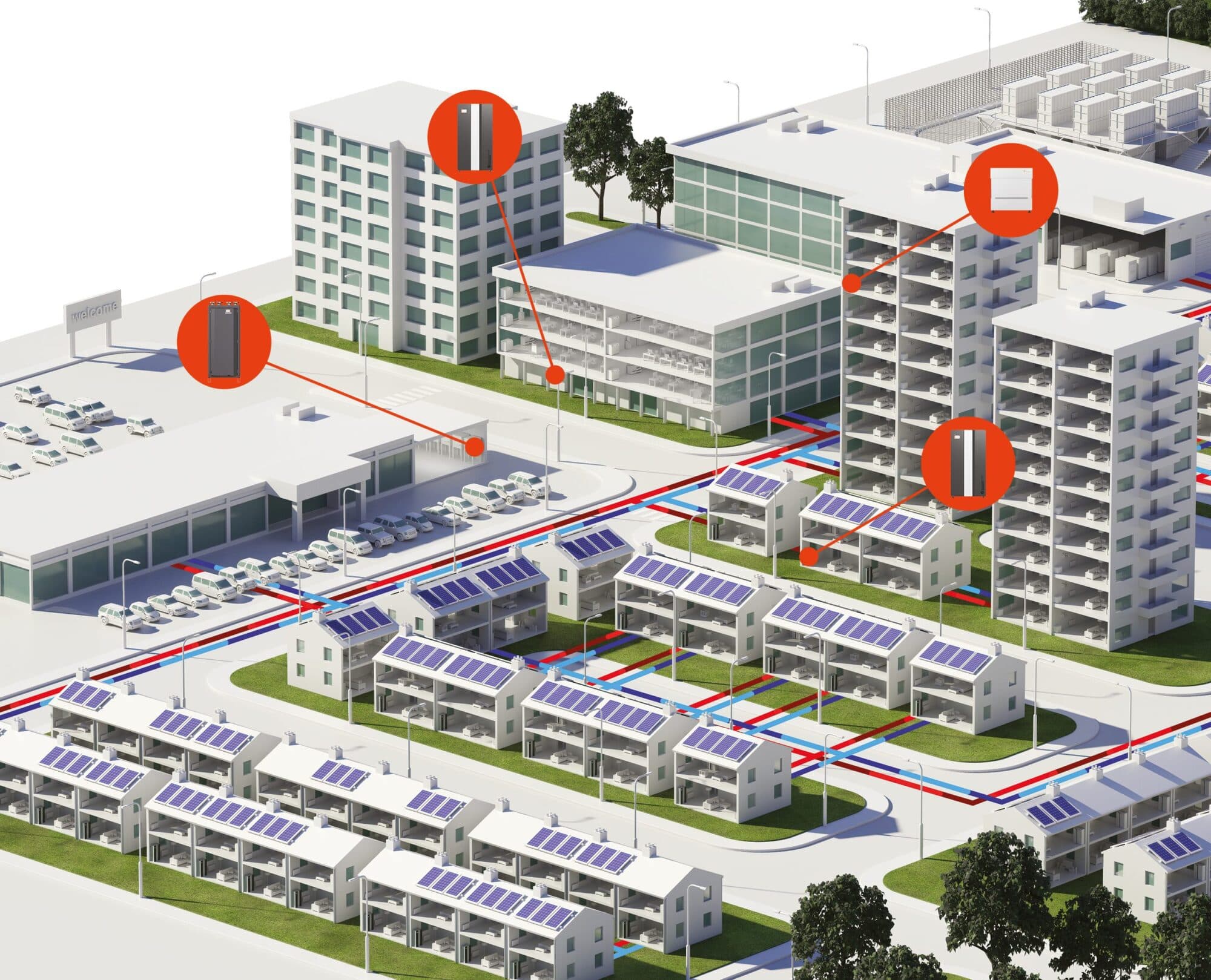Element Energy’s Low Carbon Heat Study is an in-depth study into the costs, performance, and benefits of a networked approach to ground source heat pumps (GSHP).
GSHP networks install ambient loops in the street, financed and operated by a third party, with a heat pump in each home connecting to the network. The network absorbs heat from the ground at a near year-round constant of 10°C and delivers it to each home’s heat pump to be raised to the temperature required for heating and hot water.
Because of the stable ambient temperature of the ground, GSHPs can achieve efficiencies above 400%, meaning for every kWh of electricity consumed, 4 kWh of heat are supplied to the home. A networked approach to GSHPs means millions of homes, from terraces and tower blocks, can install GSHPs and access the benefits available from them. Read the Executive Summary.
Phase 1
The first phase of this study considers the technology from the perspective of the householder, examining the efficiency of ground source and air source technologies and their comparative running and installation costs. Examining the potential benefits of a networked approach to GSHPs, in which the groundwork costs are funded via a long-term network fee instead of upfront capital expenditure, the study finds:
- GSHPs use approximately 40% less energy a year than ASHP to heat the same home.
- At scale, networked heat pumps have up to 20% lower annualised costs compared to an air source heat pump, with a lower upfront cost.
- Modelled specifically on the most common UK housing type, at scale deployment, upfront capital costs are approximately 8% (£900) lower, and annual running costs are 18% (£290/year) lower.
- Networked heat pumps offer customers ground source heat pumps for less than the price of an air source heat pump – with lower overall running costs.
Phase 2
The second phase of the study examines the electricity grid impacts in 2050 of increasing volumes of GSHPs within an assumed total of 23.3 million heat pumps, alongside demand side response and the use of heat batteries in 50% of homes. The study finds:
- Total annual GB electricity demand in 2050 could be reduced by 6.4TWh by increasing GSHP from 15% to 38% of total installation. Increasing GSHPs to a theoretical 100% of heat pumps would result in 24TWh savings, almost the same as the total annual output of Hinkley C.
- GB peak electricity demand in 2050 could be reduced by up to 4GW (equivalent to GB’s typical winter capacity margin) by increasing GSHP from 15% to 38% of total installation. Increasing GSHPs to a theoretical 100% of heat pumps would result in peak demand reduction of 16GW (around a third of GB peak demand today), with demand flexibility and heat batteries reducing this a further 20GW.
- Reductions in peak demand and electricity consumption could lead to electricity system cost reductions of up to £15.1/billion a year by 2050 due to lower generation and grid capacity requirements.


